Q
What is the Fuel Consumption of Perodua Axia?
As one of Malaysia's most popular entry - level models, the Perodua Axia boasts excellent fuel economy. According to official data, the 20203 model of Axia consumes 3.8 to 4.3 liters of gasoline per 100 kilometers. The specific figure depends on the model version and driving conditions. For example, the combined fuel consumption of the 1.0L D - CVT model on a mix of urban and highway roads is about 22 to 23 kilometers per liter. This performance is attributed to its lightweight body design and efficient engine tuning, making it suitable for daily commuting and family use.
For Malaysian consumers, the low fuel consumption of the Axia not only helps save on fuel costs but also suits the local situation of significant fuel price fluctuations. In addition, maintaining good driving habits such as smooth acceleration and regular vehicle maintenance can further improve fuel efficiency.
If you're thinking about buying an economical small car, the Axia's fuel performance and affordable price make it a worthy option. Meanwhile, it is recommended that you pay attention to the actual driving experience during a test drive to more comprehensively evaluate its performance.
Special Disclaimer: This content is published by users and does not represent the views or position of PCauto.
Related Q&A
Q
What is Axia tyre size?
The tire sizes for the Perodua Axia vary depending on the specific trim level and model year. The most common spec you'll come across is 165/55 R14 – that's the standard fitment for most Axia variants, perfect for zipping around the city and saving on fuel costs.
If you step up to some of the higher - end trims, you might find 175/65 R14 tires instead. These tires offer a bit more grip and stability, especially when cornering or at higher speeds.
But picking tires isn't just about the numbers. You've got to pay attention to the tread pattern and rubber compound too. For daily commuters who mostly stick to city streets, a good all - season economy tire should be a good choice. On the other hand, if you're regularly hitting the highway for longer hauls, a touring or slightly higher - performance tire might be a better bet for that extra peace of mind.
Malaysia's weather is quite changeable, with sudden downpours. It's smart to choose tires with good water dispersion, such as those with deep grooves and a tread design that helps quickly channel water away, reducing the risk of hydroplaning on slick roads during the monsoon season.
Also, don't forget the basics: keeping an eye on your tire pressure and checking tread wear regularly. It's not just about making your tires last longer – it's a crucial safety thing too. Under - inflated or worn - out tires can cause problems, especially in the wet conditions mentioned above.
Thinking of upsizing your tires for a better look or performance? Just make sure whatever new size you choose is compatible with the Axia's stock setup. You don't want to throw off your speedometer accuracy or put extra strain on the suspension components. When in doubt, follow the manufacturer's recommendations – they know what works best for the car.
Q
What is the top speed of Axia?
The Perodua Axia, a top pick among Malaysia's entry-level economy cars, maxes out at around 155 to 165 km/h. Your actual top speed might vary a bit depending on the model year and specs. Take the 2023 1.0L DVVT engine version, for example – it's smoother and more fuel-efficient, but when it comes to flat-out speed, it's pretty much on par with the earlier models.
Under the hood, you've got a 1.0L three-cylinder engine, and let's be real, this little guy's designed first and foremost for zipping around the city. That said, it still holds its own on the highway with steady power delivery. Just keep in mind, it's a lightweight car, so you'll definitely notice more wind noise when you're pushing those higher speeds. For safety and to keep that fuel gauge happy, sticking to a reasonable pace is the way to go.
For Malaysian buyers, the Axia's main draws are its wallet-friendly price tag, low maintenance costs, and impressive fuel economy – we're talking about an official 21km/L. It's perfect for daily runabouts. Now, if you're craving a bit more zip, you might want to check out rivals like the Proton Saga. Its 1.3L engine gives slightly stronger acceleration. But here's the thing: the Axia still has the edge when it comes to resale value and the backing of a solid brand service network.
Q
What kind of car is Axia?
The Perodua Axia stands as one of Malaysia's most beloved entry-level economy cars. Launched back in 2014 by homegrown brand Perodua, it's all about delivering stellar fuel efficiency and a wallet-friendly price tag, making it a top pick for zipping around the city or handling daily family duties. Under the hood, you'll find a 1.0-liter three-cylinder engine, paired with your choice of manual or automatic transmission. It's a fuel sipper too – official figures peg it at around 21km/L. The 2023 refresh upped the ante with the Advanced Safety Assist (ASA) 3.0 system, throwing in handy features like automatic emergency braking and lane departure warning to boost safety credentials.
What makes the Axia a hit with Malaysians? Start with that approachable starting price, hovering around RM38,600, plus low maintenance costs. Its compact dimensions – a tidy 3.7 meters in length – are perfectly suited to tight city streets and those all-too-common cramped parking spots. It's worth noting that the Axia shares its platform with the Toyota Agya and Daihatsu Ayla, so it inherits that solid Japanese reliability we all know. Perodua sweetens the deal further with a five-year warranty, giving owners extra peace of mind.
For Malaysian shoppers on a budget who still want the thrill of a new car – think fresh graduates or small families – the Axia is a seriously practical choice. Factor in the super low annual road tax (just RM20!) and its potential for some fun modifications, and it's easy to see why the Axia keeps rolling off dealer lots.
Q
What size engine is the Axia?
The Perodua Axia is powered by a 1.0-liter three-cylinder naturally aspirated engine, codenamed 1KR-VE. This mill features a DOHC (Double Overhead Camshaft) setup, churning out a maximum of 67PS at 6,000rpm and 91Nm of torque at 4,400rpm. It's also equipped with Dual VVT-i (Variable Valve Timing with intelligence) technology, which plays a big part in its impressive fuel efficiency – Perodua claims it can hit 22km per liter. That makes it a really solid choice for zipping around Malaysian cities.
As Perodua's entry-level offering, the Axia's engine might not be the biggest in displacement, but don't let that fool you. Thanks to the car's lightweight design and some smart powertrain tuning, it's more than up to the task of daily driving. This is especially true in Malaysia's often congested traffic, where a smaller engine actually shines – it sips less fuel and puts out fewer emissions, which is a win-win.
Another thing worth noting is that this 1KR-VE engine isn't unique to the Axia; it also powers other Perodua models like the Myvi 1.0 variant. That means it's a tried-and-tested unit with a reputation for reliability. On top of that, maintenance and repair costs are generally quite reasonable. All in all, it makes the Axia a very compelling option for Malaysian buyers who are keeping a close eye on their budget.
Q
Is Axia 3 cylinder?
Right, the Perodua Axia comes with a 1.0-liter three-cylinder engine, and this little powerplant is all about fuel efficiency and a compact design – perfect for city driving. Especially here in Malaysia, it delivers decent performance while keeping fuel consumption low, which is a big plus in our traffic. Compared to a traditional four-cylinder, losing one cylinder makes the three-pot simpler, lighter, and that helps trim overall vehicle weight and boost fuel economy. Now, sure, three-cylinders can sometimes have a bit more vibration, but modern tech like balance shafts has really ironed that out these days. For Malaysian buyers watching their budget and wanting something economical for daily commuting, the Axia's three-cylinder is a solid, practical pick. It checks all the boxes for local emissions standards and keeps running costs down, even in stop-and-go jams. If you're worried about how smooth it is, though, I'd definitely suggest a test drive first. After all, how a car feels is pretty personal.
Q
What is the new Axia 2019?
Launched back in 2019, the Perodua Axia remains one of Malaysia's go-to choices for an affordable entry-level A-segment car. It's all about being easy on the wallet and packing solid value, making it a top pick for zipping around the city or running family errands.
Visually, it got some nips and tucks to keep things fresh – think a more modern front grille and LED daytime running lights that give it a younger, sharper look. Step inside, and the 2019 Axia upped its game with an upgraded sound system and comfier seat materials. Higher-spec trims even throw in a multifunction steering wheel and touchscreen infotainment, making those drives a bit more enjoyable.
Under the hood, you're looking at a 1.0L three-cylinder engine paired with either a 4-speed auto or 5-speed manual. The real star here? Fuel efficiency. It's a champ at sipping petrol, which is exactly what Malaysian buyers want when it comes to keeping running costs low.
Safety-wise, all Axias come standard with dual airbags, ABS, and EBD. Some models take it up a notch with Vehicle Stability Control (VSC) and Traction Control (TRC), adding that extra peace of mind on the road.
As Perodua's hometown hero, the 2019 Axia stays true to the series' roots of practicality and dependability, while those little upgrades here and there cater to folks wanting a bit more quality. If you're a Malaysian shopper on a budget but still want something that's fuel-efficient, easy to drive, and cheap to maintain, the 2019 Axia is definitely one to check out.
Q
What Segment is Perodua Axia?
The Perodua Axia belongs to the A-Segment vehicles in the Malaysian market, which is the most entry-level microcar category. It mainly targets consumers with limited budgets who prioritize fuel economy. Its body size is compact (about 3,640mm in total length and a wheelbase of 2,450mm). It is equipped with a 1.0L three-cylinder engine and paired with a D-CVT gearbox, highlighting the flexibility for urban commuting and the advantage of low cost. The official fuel consumption data shows that it can travel about 22 kilometers per liter of gasoline, meeting the needs of Malaysian consumers for economical and practical small cars.
In terms of extended knowledge, Malaysia's automobile classification standards usually refer to the European system. Besides the Axia, A-Segment models also include the Proton Saga and other vehicles. These cars are characterized by their affordable prices (the starting price of the Axia is around RM22,000 to RM49,000) and are suitable for narrow road environments. However, their safety configurations have been significantly improved in recent years. For example, all models of the 2023 new Axia come standard with ABS + EBD and dual airbags, and the top - end version is even equipped with the ASA 3.0 advanced safety assistance system, indicating that entry - level car models are gradually upgrading their technological equipment. Consumers can choose different configuration versions according to their budgets. At the same time, it is recommended to test - drive and compare the Proton Iriz in the same class or second - hand B - Segment models before purchasing a car to comprehensively evaluate the balance between space and functionality.
Q
What is the Reslae Value of Perodua Axia?
As one of the best-selling entry-level models in Malaysia, the Perodua Axia shows relatively stable resale value in the used car market. This is mainly due to advantages such as the high vehicle ownership of the brand, low maintenance costs, and good fuel economy. Depending on factors like vehicle age, mileage, vehicle condition, and configuration, Axias that are one to three years old usually retain 60% to 75% of their original price, while those that are five years old are around 40% to 50%. The specific price also needs to refer to market supply and demand and maintenance records. In addition, the durability of the Axia and its extensive service network also support its resale value.
For consumers considering buying a used Axia, it is recommended to give priority to models with complete original factory maintenance records to ensure the vehicle condition. At the same time, pay attention to the configuration differences of minor facelifts in different years. For example, models after 2022 have upgraded safety features, and such updates may have a positive impact on the resale price. In the Malaysian used car market, economical small cars like the Axia usually have a fast turnover rate and are a practical choice for car buyers with limited budgets.
Q
How Many CC is Perodua Axia?
The Perodua Axia is one of the most popular entry - level compact cars in Malaysia. The engine displacement varies across different versions. Currently, the latest model of the Axia is equipped with a 1.0 - liter three - cylinder naturally aspirated engine, with a specific displacement of 998cc. This is a common engine configuration for compact economy cars. This engine emphasizes fuel efficiency and is highly suitable for city commuting and daily use.
For Malaysian consumers, the low displacement of the Axia not only means lower fuel consumption and road tax but also meets the domestic demand for economical and practical vehicles. It's worth noting that engine displacement (CC) doesn't directly determine a vehicle's power performance. Other factors such as horsepower, torque, and gearbox tuning also need to be comprehensively considered. Although the Axia has a relatively small displacement, its lightweight body design and optimized transmission system ensure sufficient power for daily driving.
Moreover, the Malaysian market is quite sensitive to the displacement of compact cars. Therefore, engines around 1.0 liters are very common locally. They can balance performance and cost and are also suitable for the local road conditions and fuel price environment.
Q
What is the Engine in Perodua Axia?
The Perodua Axia is a highly popular economy car in the Malaysian market. It is equipped with a 1.0-liter three-cylinder naturally aspirated engine, model number 1KR-DE. This engine was jointly developed by Perodua and Toyota of Japan. It adopts the double overhead camshaft (DOHC) and variable valve timing (VVT-i) technologies. The maximum power is 67 horsepower and the maximum torque is 91 Nm. It is paired with a 4-speed automatic transmission or a 5-speed manual transmission. The overall performance is smooth and it boasts excellent fuel economy, making it very suitable for urban commuting.
The design of this engine focuses on low fuel consumption and low emissions, meeting the environmental protection requirements of the Malaysian market. At the same time, it also reduces the daily usage cost for car owners. For readers who want to learn more about automotive knowledge, although three-cylinder engines may be slightly inferior to four-cylinder engines in terms of smoothness, their lightweight and high - efficiency features make them very popular in small - displacement models. The addition of VVT - i technology further optimizes power output and fuel efficiency, which are common technological trends in modern small - displacement engines.
Latest Q&A
Q
Does the 2019 Yaris have a backup camera?
The 2019 Toyota Yaris did come with a reverse camera in the Malaysian market. Back then, this feature was already becoming a standard fitment on most models, especially the mid-to-high spec variants. It displays a live feed of what's behind you on the infotainment screen, making reversing safer by helping drivers spot potential hazards and reducing blind spots.
Just a heads-up though, exact specs can vary between trim levels. If you're a Yaris owner, it's always best to check your owner's manual or give Toyota Malaysia a call to confirm if your specific model has this feature.
Reverse cameras are pretty much everywhere in modern cars these days. It's not just the Yaris – rivals like the Honda Jazz and Mazda 2 also offered similar safety tech, some even with dynamic guidelines or radar-based warning systems to make things even easier.
If you're looking at a used Yaris, do yourself a favor: test the reverse camera during your test drive. Make sure it works properly, and keep an eye out for any screen issues like fading or lag. That way, you can be sure this handy feature is in top shape and ready to help.
Q
What kind of engine is in the 2019 Toyota Yaris?
The 2019 Toyota Yaris in the Malaysian market primarily comes with a 1.5-liter 2NR-FE four-cylinder naturally aspirated petrol engine. This engine features Dual VVT-i (Dual Variable Valve Timing-intelligent) technology, churning out a maximum 107 horsepower and a peak torque of 140 Nm. It's mated to either a 7-speed CVT automatic or a 5-speed manual gearbox, delivering impressive fuel efficiency.
Renowned for its reliability and low maintenance costs, this engine is a solid fit for city commuting and also meets Malaysia's Euro 4 emission standards. It's worth noting that while naturally aspirated engines like this one might not deliver the same punch as turbocharged units, their simpler construction translates to better durability and lower upkeep expenses – a big plus given Malaysia's road conditions and climate. Toyota has also done a decent job with sound insulation on this engine, so noise levels are nicely controlled, especially at lower speeds.
If straight-line speed is your top priority, you might want to check out some other models in this segment. But when it comes to overall value for money, this 1.5L Yaris is a strong contender and remains a popular pick in the small car market.
Q
How long does a 2019 Toyota Yaris last?
The 2019 Toyota Yaris typically clocks up 150,000 to 200,000 kilometers or more on Malaysian roads, with its lifespan heavily relying on how well you maintain it and your driving style. This little workhorse is known for being tough as nails and rarely letting you down – it’s practically tailor-made for Malaysia’s city traffic and weather. Sticking to regular oil changes, keeping the cooling system spotless, and swapping out the timing belt when it’s due can really stretch its service life. Toyota’s got a solid after-sales network here, and genuine parts are easy to come by, which is a big plus for keeping it running long-term.
One thing to watch out for though – Malaysia’s hot and humid climate can be rough on rubber components and electrical bits. I’d recommend checking the chassis rubber parts and wiring insulation every couple of years to be safe. When it comes to holding value, the Yaris does pretty well in the used car market here; a five-year-old model usually still retains around 60% of its original price. If you’re mainly using it for city commuting and keep up with maintenance, there’s no reason it can’t last over 10 years without major repairs.
For Malaysian buyers on a budget looking at a used Yaris, pay extra attention to the transmission fluid change history and the condition of the air conditioning system – those are the usual trouble spots in our tropical weather.
Q
What is the 2019 Yaris known for?
The 2019 Toyota Yaris made a name for itself in Malaysia thanks to its solid reputation for reliability and fuel efficiency. This little hatchback packs a 1.5-liter Dual VVT-i engine under the hood, churning out 107 horsepower and 140 Nm of torque. Paired with a CVT gearbox, it’s a real fuel sipper – perfect for zipping around the city.
Safety-wise, it doesn’t skimp either. Standard kit includes VSC (Vehicle Stability Control), HAC (Hill-Start Assist Control), and a full complement of 7 airbags, which is reassuring. Its compact size – 4,140mm long – makes it a breeze to maneuver through tight city streets and squeeze into those tricky parking spots. The 2019 model also got a subtle style upgrade with LED daytime running lights and a chrome grille, giving it a slightly more modern look.
Here’s a testament to its toughness: you’ll often spot Yaris models serving as ride-hailing cars or taxis around Southeast Asia. That tells you something about how durable they are. If you’re shopping around in this segment, the Honda Jazz or Nissan Almera are worth a look too – both are pretty thrifty on fuel. But where the Yaris really shines is Toyota’s after-sales network in Malaysia. It’s one of the most extensive out there, which means getting it serviced or repaired is a whole lot more convenient. That’s a big plus in my book.
Q
Is the 2019 Yaris easy to park?
The 2019 Toyota Yaris is a solid pick for city driving in Malaysia. Its compact size and nimble handling make parking a breeze—at under 4 meters long with a tight turning radius, it weaves through tight parking lots and congested streets without breaking a sweat. Owners often praise the good visibility, and when paired with the mirrors and reverse sensors (some higher trims might even get a reverse camera), it’s a total lifesaver for parking, especially if you’re new to driving.
Think about it: if you’re regularly navigating cities like KL, a small car like the Yaris takes a lot of the stress out of parking. Malaysia’s older urban areas are full of those tiny, cramped parking spots, and a shorter car definitely has an easier time squeezing into them. Plus, the electric power steering makes the wheel feel super light when you’re inching around at low speeds.
But here’s the thing—while small cars rock for parking, they might not feel as planted as bigger vehicles when you’re cruising at highway speeds. So, just make sure to factor in your own driving style and what you really need before deciding.
View MoreRelated News

Perodua Axia Hits 790,000 Sales: What Makes It So Popular?
AshleyAug 12, 2025
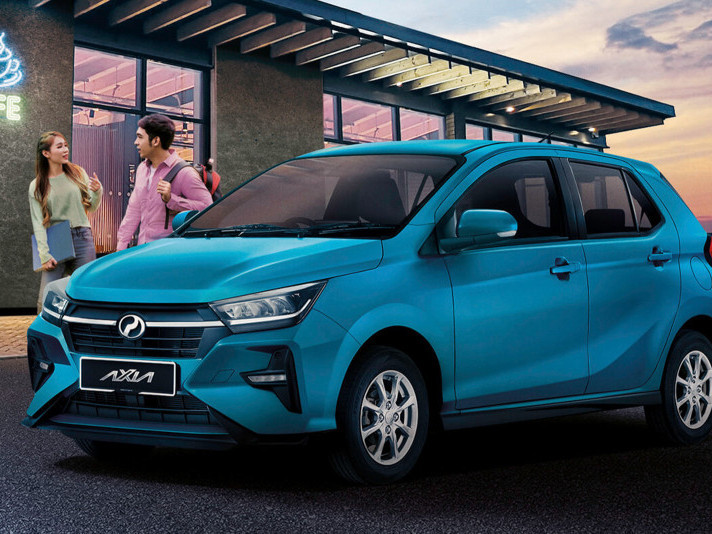
How Much is the Perodua Axia and How to Get the Best Price for Your Desired Model
WilliamMar 25, 2025
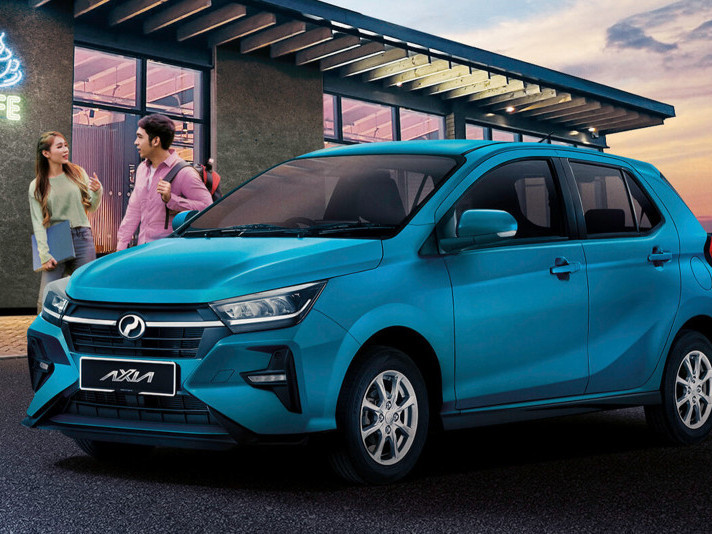
Perodua Axia’s Monthly Payments and Loan Calculation in Malaysia
WilliamMar 21, 2025
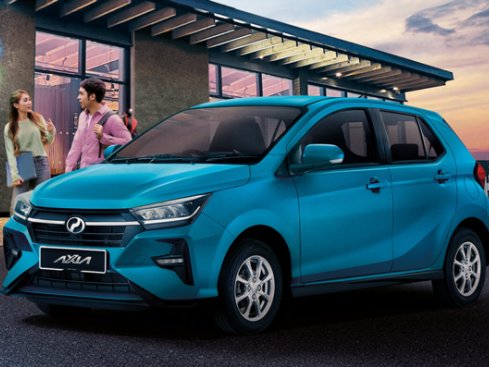
The 2023 Perodua Axia is priced from RM 22,000, with the 1.0 E MT offering the highest cost-performance ratio?
LienJun 11, 2024
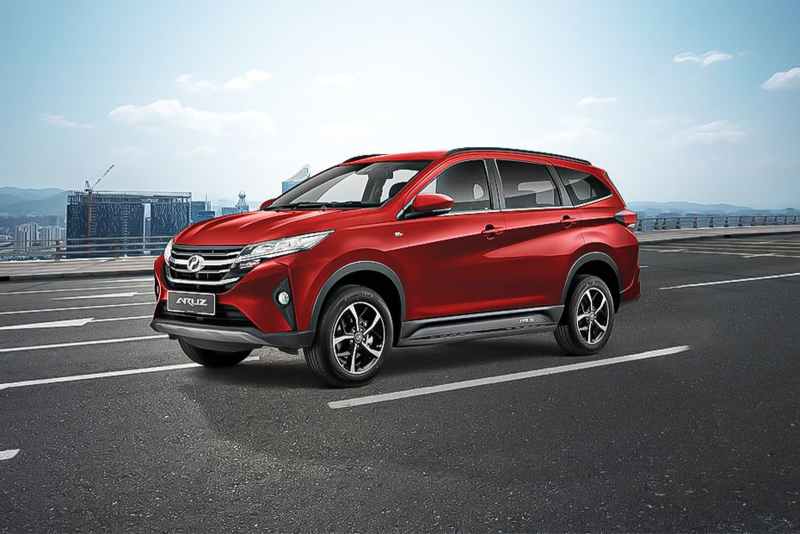
Perodua Aruz Review: A Practical and Safe SUV That Won’t Break the Bank
JamesJul 25, 2025
View More

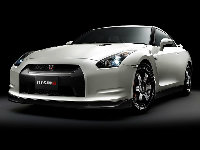




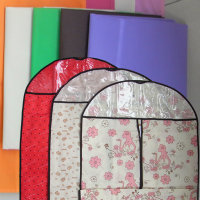




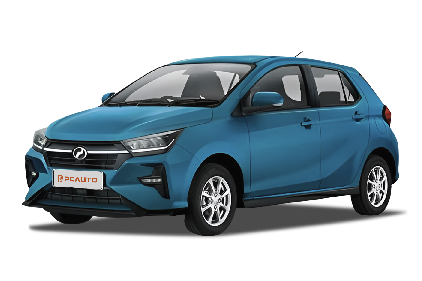




Pros
Cons